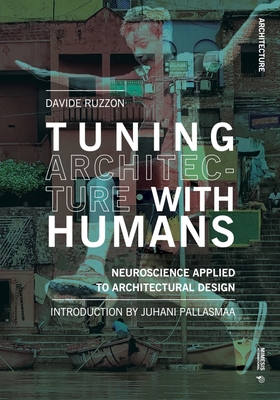Tuning Architecture with Humans: Neuroscience Applied to Architectural Design

Tuning Architecture with Humans: Neuroscience Applied to Architectural Design
Through thousands of years of evolution, features of the natural environment helped to mold human behavior. As social beings, early humans also found resonance with each other in relation to their surroundings, and even developed emotional templates for certain situations, such as climbing a hill. These in turn lead to gestures and spoken language. Neuroscience has shed light on these mechanisms and led to discoveries about how early architecture contributed to human cognitive development. A significant shift occurred when natural elements, such as hills and trees, became influences on constructed shelters and monuments. This book clarifies how the beginnings of architecture were coupled with kinematic patterns formerly associated with natural settings. Without such patterns we would not have the full range of Embodied, Extended, Enacted or Embedded Cognition--to use contemporary terms. Today's alienating-built environment, fueled by technology, contains urban areas in both new and existing cities that have denied the nature of human behavior as it evolved to sustain social and cultural life. Such conditions hastened the fossil fuel crisis and climate change, among other problems. Tuning Architecture with Humans offers new ways of understanding the nature of our crises, and shows how the human sciences can contribute to more human-centered approaches to architecture, urbanism, and landscape design.
PRP: 185.11 Lei
Acesta este Prețul Recomandat de Producător. Prețul de vânzare al produsului este afișat mai jos.
148.09Lei
148.09Lei
185.11 LeiLivrare in 2-4 saptamani
Descrierea produsului
Through thousands of years of evolution, features of the natural environment helped to mold human behavior. As social beings, early humans also found resonance with each other in relation to their surroundings, and even developed emotional templates for certain situations, such as climbing a hill. These in turn lead to gestures and spoken language. Neuroscience has shed light on these mechanisms and led to discoveries about how early architecture contributed to human cognitive development. A significant shift occurred when natural elements, such as hills and trees, became influences on constructed shelters and monuments. This book clarifies how the beginnings of architecture were coupled with kinematic patterns formerly associated with natural settings. Without such patterns we would not have the full range of Embodied, Extended, Enacted or Embedded Cognition--to use contemporary terms. Today's alienating-built environment, fueled by technology, contains urban areas in both new and existing cities that have denied the nature of human behavior as it evolved to sustain social and cultural life. Such conditions hastened the fossil fuel crisis and climate change, among other problems. Tuning Architecture with Humans offers new ways of understanding the nature of our crises, and shows how the human sciences can contribute to more human-centered approaches to architecture, urbanism, and landscape design.
Detaliile produsului










